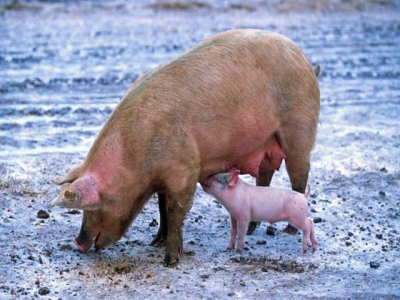Livestock reproduction and nutrition: The role of insulin

The role of insulin in animal reproduction is very complex, but its importance is too significant not to attempt to present it in a simple manner.
This topic, the role of insulin in livestock reproduction and nutrition, is one of the issues that I was never interested in while at graduate school, and honestly, I do not recall any course taken that strived to make things crystal clear. When I was faced with the challenge of explaining this relationship as a field nutritionist, I realized why: It is very complex. But, its importance is too significant not to attempt to present it in a simple manner. So, with a deep breath, let us begin!
First, a bit about hormones
It all starts when the hypothalamus (at the base of the brain) secretes gonadotropin releasing hormone (GnRH). In turn, GnRH regulates the secretion of follicle stimulating hormone (FSH) that stimulates the production of ova (eggs), and luteinizing hormone (LH) that causes the ova to be released. These last two hormones also initiate and stimulate the production of the ovarian hormones (estrogen and progesterone). For the purposes of our discussion, we can retain that progesterone plays a central role in the process of regulating further reproductive performance. It has been implicated that reduced levels of circulating progesterone are directly responsible for reduced early embryonic survival in many species. Thus, keeping progesterone levels up is crucial in ensuring embryonic survivability.
Here comes insulin
When it comes to progesterone levels circulating in blood, these can be elevated or depressed by a simultaneous modification of the rate and efficiency of hormone production and clearance. In both cases, the role of insulin is paramount, making insulin a pivotal hormone that links nutrition and reproduction.
Slightly above average levels are beneficial for enhancing progesterone levels in ovulating and gestating animals.
As might be expected, things remain complex in anything that has to do with hormones as they are designed to work in an ambivalent way. In general, both high and low levels of insulin in the blood stream are undesirable, as they upset reproductive hormonal balance. In fact, slightly above average levels are beneficial for enhancing progesterone levels in ovulating and gestating animals. What is most important, however, is that these slightly elevated concentrations of progesterone do not fluctuate widely during the reproductive cycle. And, as insulin levels fluctuate easily through feed intake patterns, so does progesterone levels during the day.
Thus, to benefit a more stable progesterone daily pattern, it becomes clear it is important to stabilize circulating insulin levels. And, under commercial conditions, this can be done by controlling the balance of starch and fats and by regulating feed intake control. Lamentably, most efforts remain empirical as research evidence is scant.
Related news
Tools

Phối trộn thức ăn chăn nuôi

Pha dung dịch thủy canh

Định mức cho tôm ăn

Phối trộn phân bón NPK

Xác định tỷ lệ tôm sống

Chuyển đổi đơn vị phân bón

Xác định công suất sục khí

Chuyển đổi đơn vị tôm

Tính diện tích nhà kính

Tính thể tích ao



 Enzyme use may boost piglet gut health, coproduct…
Enzyme use may boost piglet gut health, coproduct…  Be on the lookout for heat stress in…
Be on the lookout for heat stress in…